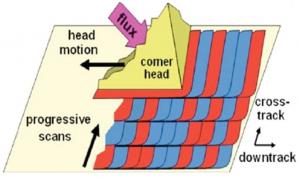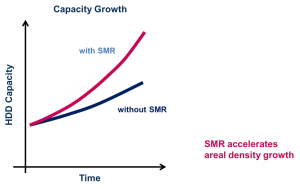The relentless growth of digital data continues to drive demand for higher capacity, lower-cost storage. Shingled Magnetic Recording (SMR) is a technology designed to extend HDD capacity up to 25 percent by overlapping tracks on the media. SMR may impact performance if not properly managed by the drive or host.

SATA protocol supports Zoned Device ATA Command Set (ZAC) to allow management of SMR. ZAC was developed by the INCITS Technical Committee T13* and is supported in SATA specification revision 3.3.
SMR has three distinct management modes:
1) Drive Managed (DM)
a. A direct non-SMR replacement
b. Acts like a traditional HDD with the benefit of added capacity
c. Backward compatible with non-SMR HDDs
2) Host Managed (HM)
a. Requires a host to manage data ordering and performance mitigation
b. Command extensions are required
c. Not backward compatible with non-SMR HDDs
3) Host Aware (HA)
a. A combination of DM and HM
b. Uses command extension
c. Backward compatible with non-SMR HDDs.
SMR Benefits:
- SMR leverages existing standards to increase platter capacity by up to 25 percent
- SMR technology adds value for high capacity, power efficient storage solutions required by digital media content servers, enterprise data center servers, cloud based active and cold storage – any configuration that requires high capacity storage and high reliability
- Drive Managed SMR provides 100 percent backward compatibility with non-SMR Host Managed and non-SMR Host Aware systems.
- SMR technology enables the highest storage value in terms of $/TB and Watts/TB.**
SMR and other technologies are expected to drive the lowest cost per GB for years to come.

Source: 2016 Storage Developer Conf. The Shingled Magnetic Recording (SMR) Revolution – Data Management Techniques Examined
For more information on SMR, the SNIA website has the following whitepapers and others:
- Dunn-Feldman SNIA Tutorial Shingled Magnetic Recording
- Jorge Campello SMR Next Generation Storage Technology.pdf